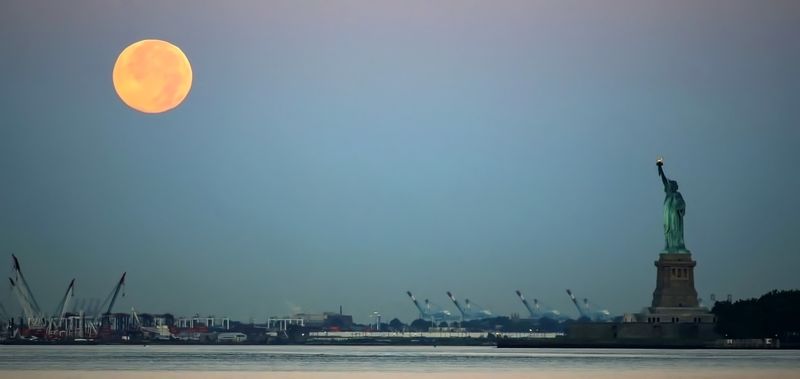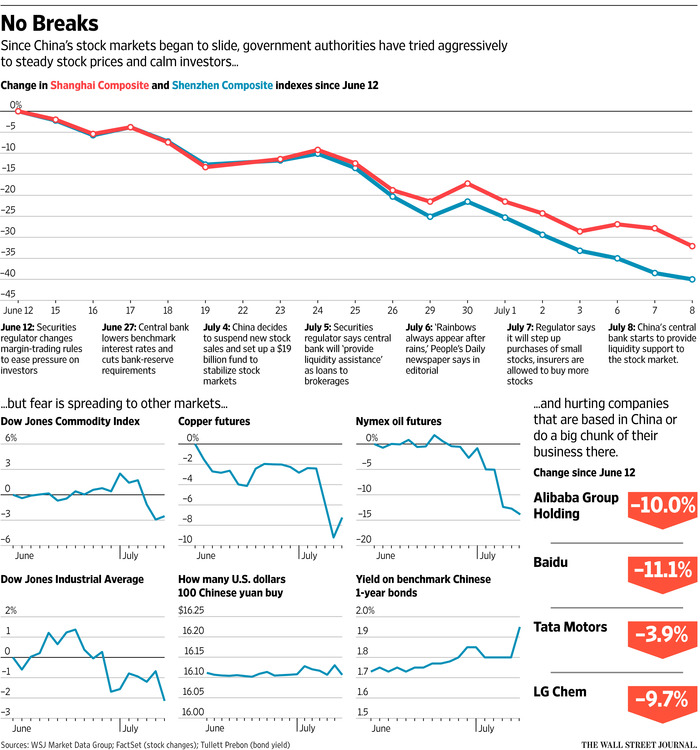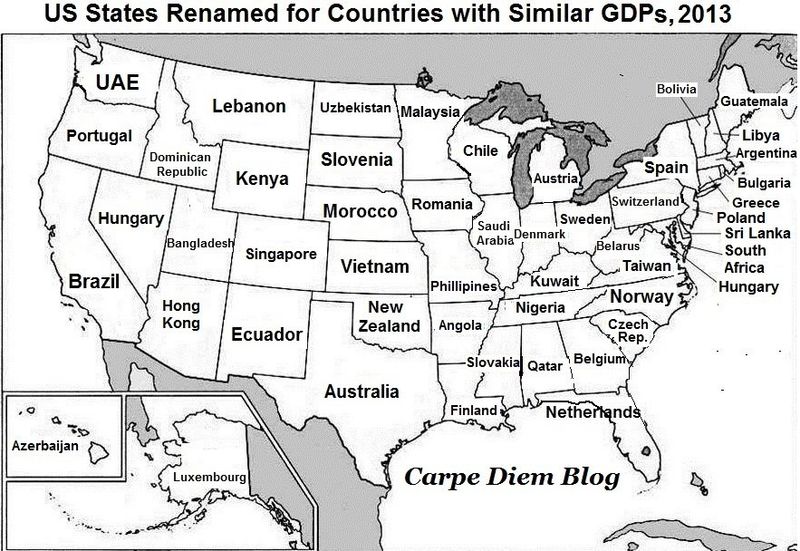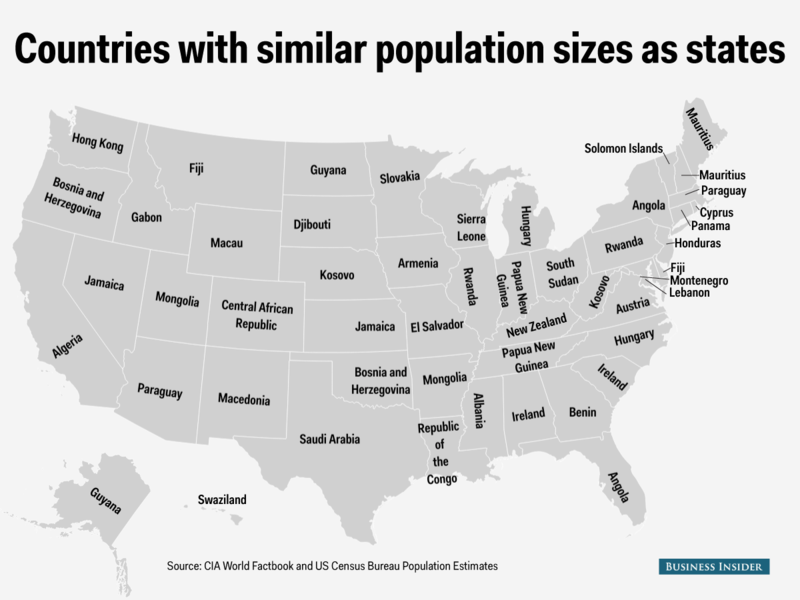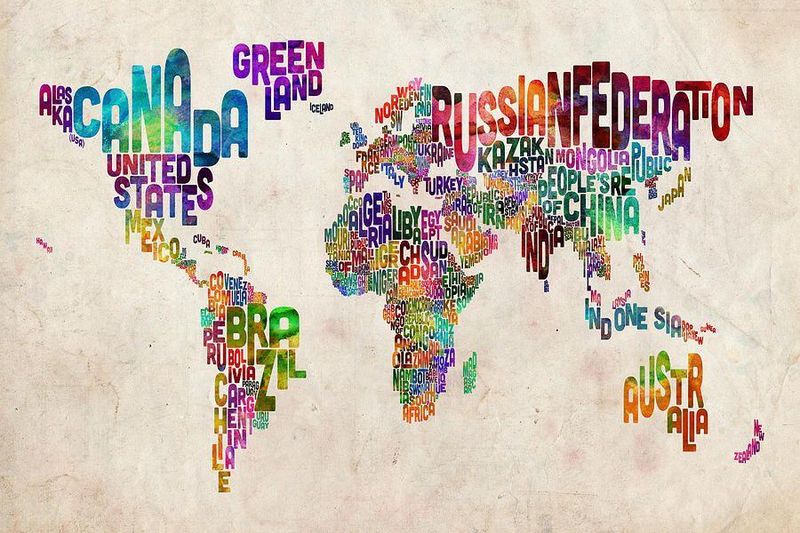There are over 7,100 known languages actively spoken in the world today. Of those, just twenty-three of them act as a mother tongue for more than 50 million people. Collectively, those 23 languages make up the native tongue of more than half the world (4.1 billion people).�
This infographic represent each language within black borders and then provide the numbers of native speakers (in millions) by country. The coloring shows how the languages have taken root in many different regions.
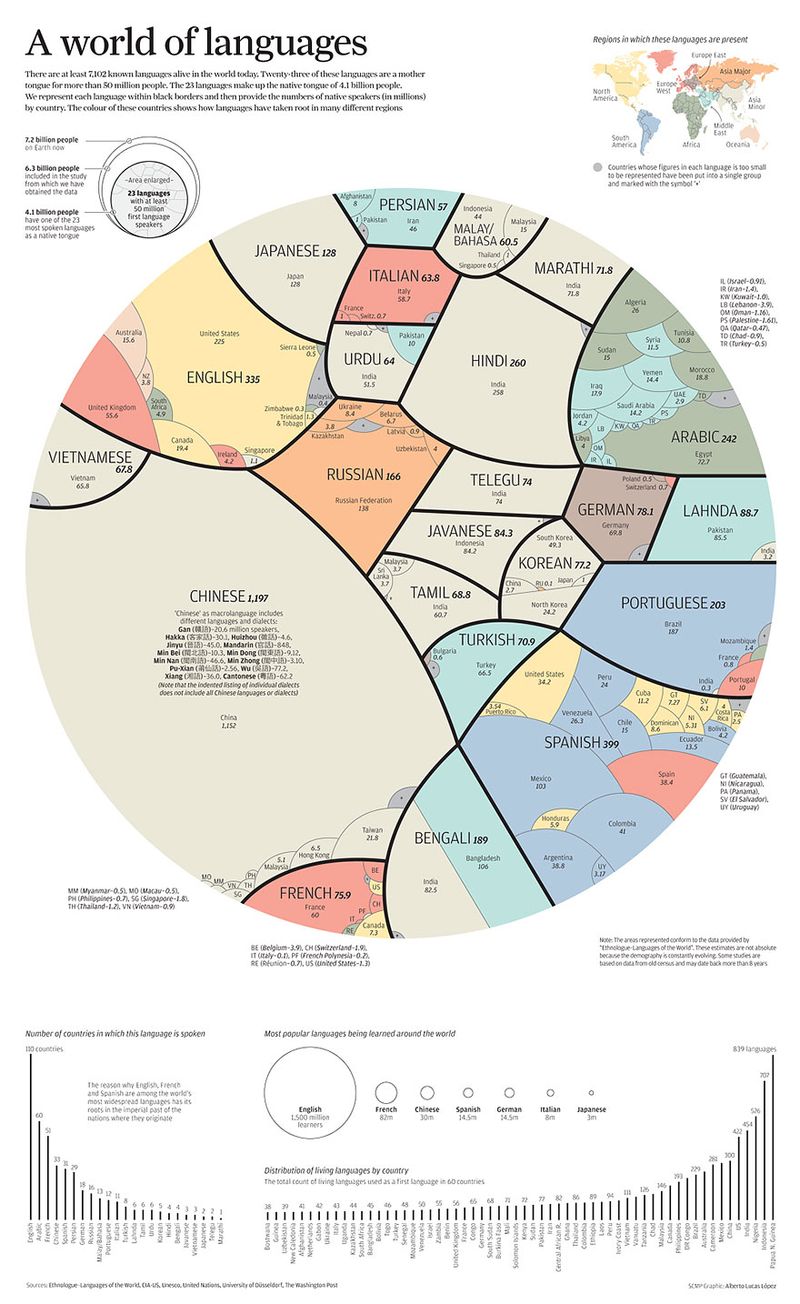
via Alberto Lucas López .
As you can see, Chinese is by far the most dominant language on the planet right now, with almost 1.2 billion people speaking dialects. Comparatively, pretty much every other language on Earth is an also-ran: Spanish (399 million speakers), English (335 million), Hindi (260 million), and Arabic (242 million) take up the next four positions. Only when you add them up do they come close to the reach Chinese has.
Although Chinese is the most popular language on Earth, it's worth noting that its influence wanes greatly outside of Asia.
If you take the geographic diversity of where a language is spoken into account, English, Spanish, French, and Portuguese are the most influential languages on Earth, because of colonialism.
For more, here is a link to the Washington Post's article: The world’s languages, in 7 maps and charts.

